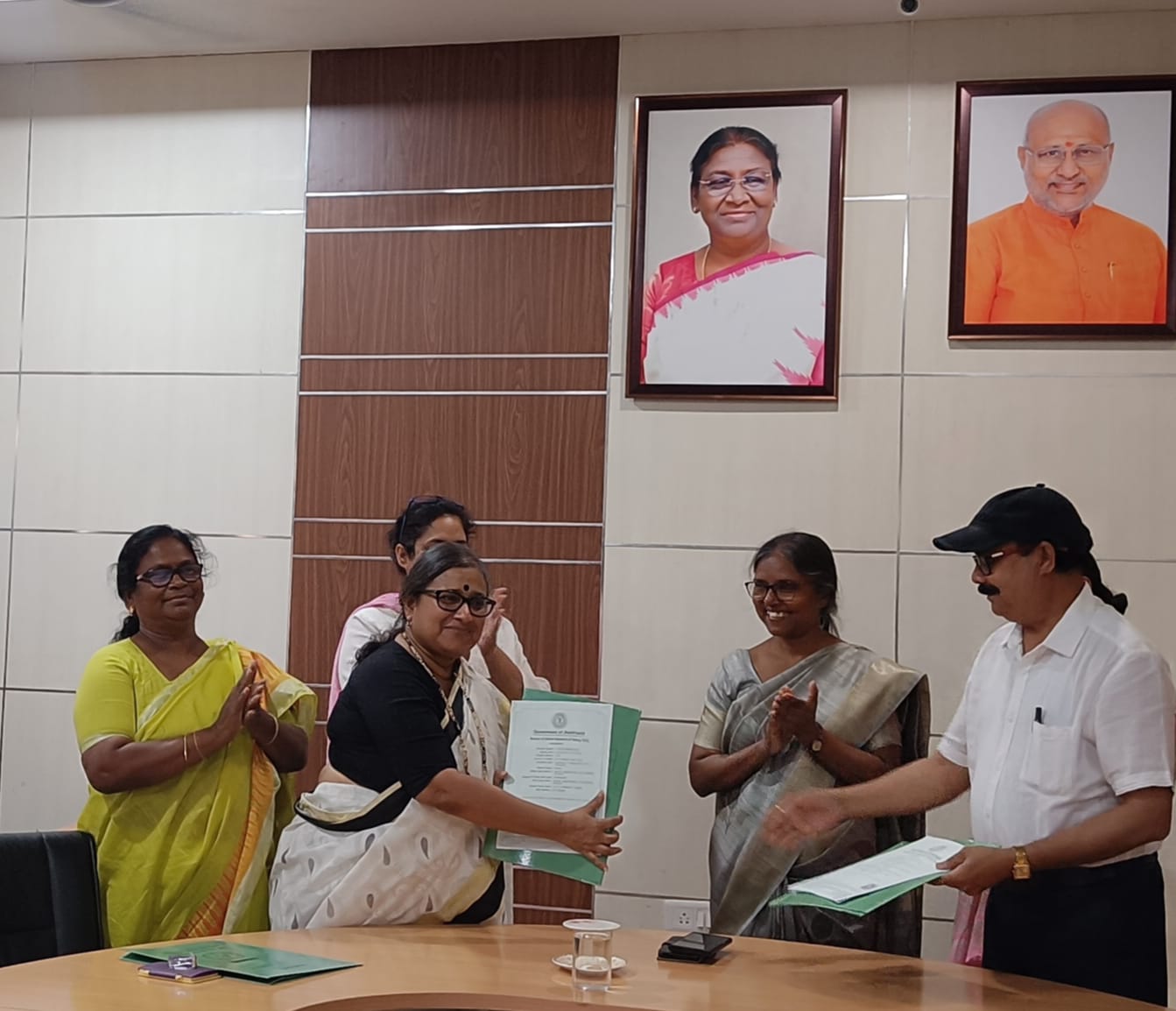Activities


IAWS signed MoU for Adivasi Women's Studies Cell in Sidhu Kanho Murmu University, Dumka, Jharkhand.
.jpg)
Educational Institutions for Women
During the 1970s only a few scholars and activists had researched women’s issues and highlighted women’s roles in the family and the economy. A few Christian educational institutions for women, such as the Isabella Thoburn College, Lucknow and Lady Doak College, Madurai, were among the first to introduce WS in their curricula. The formation of IAWS provided an impetus and the Association actively advocated the establishment of Women’s Studies Centres in universities. IAWS members have continued to be closely involved with the UGC’s efforts in this direction. Women’s studies gradually gained space both within academia and outside. In the 1980s several autonomous women’s groups and NGOs began to shape public discourse through their campaigns and strong articulation, setting an agenda for action on women’s concerns.
Administrators in the government and agencies that were sympathetic to the women’s movement helped to fund research. The emergence of feminist publishing served to bridge distinctions between activist writings and research, and also between basic and applied research. Through the years, IAWS has had an important role in giving legitimacy to the multiple objectives of women’s studies, critiquing and countering gender bias in the production of knowledge, and in policies, institutions and processes.

IAWS conferences attempt to balance structured intellectual discussions with cultural events and exhibits that foreground other ways of knowing through film screenings, exhibitions, drama, music and craft.
IAWS is also establishing a comprehensive archive, consisting of both material and digital documents. The material archive has been inaugurated at the Research Centre for Women’s Studies at SNDT Women’s University in Mumbai.
The IAWS has compiled many of its material in a CD that includes all the newsletters (many of which are only available as single copies) and some 20 publications most of which are out of print (see the listing in the December 2007 Newsletter). It also includes Conference brochures, Presidential addresses, Reports to the General Body and other such documents from the First National Conference, 1981, onwards.

